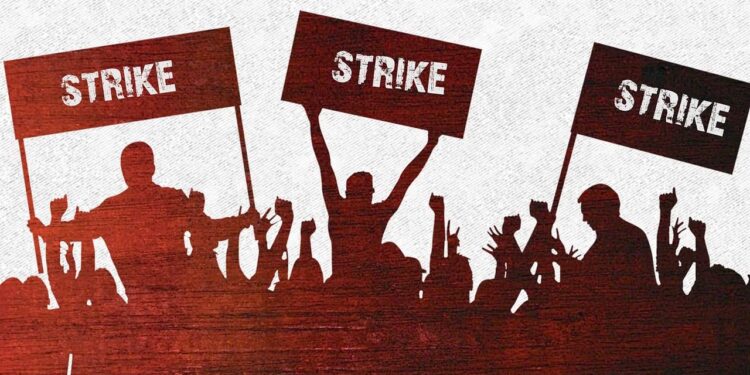In 2022, the number of industrial strikes across the UK reached a level not seen since 1989. Teachers are the latest group to announce they are going on strike, following train workers, nurses and Royal Mail staff. If you’re not sure how this happens or why, here’s a quick rundown of the basics.
Engaging in a strike involves ceasing work, which is known as industrial action
It entails workers collectively refusing to report to work for a specific duration. This action is commonly referred to as “downing tools” or a “walkout.” Typically, individuals who participate in strikes are members of a union, a group of workers who unite on key issues, such as salary increases.
Striking can also involve a reduction in work output
In such cases, employees may not completely halt work but instead decrease their level of productivity. This can include declining overtime opportunities or adhering strictly to their job descriptions without taking on additional tasks. Whilst many striking workers see this as a principled stand against what they perceive as unfair wages and/or working conditions, nonetheless they carry a measure of risk in loss of support if the public similarly perceive vital services like healthcare, education, and transport being adversely affected as a result of the strike in question.
Workers resort to striking when they seek change
Strikes occur when employers and employees fail to reach an agreement on important matters. For example, English teachers will stage a walkout in July due to prolonged disputes over pay. Strikes can also arise when management intends to alter working conditions or when there are plans that could result in job losses.
Strikes can have significant implications for other individuals
As previously mentioned, strikes can have an adverse effect on the administration of vital public services, which is, of course, the pressure point the strikers use to gain advantage in negotiations with employers. For instance, teacher strikes may necessitate alternative childcare arrangements for parents which can lead to great inconvenience and additional cost when family budgets are already feeling the pinch. Train strikes impede people’s ability to commute to work, leading to more sick days being taken and loss of productivity. While mail strikes disrupt deliveries of mail, parcels, and important documentation. However, there are exceptions; when nurses strike, they ensure a certain level of coverage to maintain emergency care services.
It’s important for strikers to maintain grassroots support and this often entails reduced work output rather than complete stoppage when vital public services are involved in the dispute.
Striking is considered a last resort
It is only pursued when a company or, in some cases, the government has made insufficient progress in resolving issues through discussions with workers. Since employees do not receive wages while on strike, taking this step is a significant decision.
It also happens that a particular trade union may also wish to make a political point or pressure a serving government into changing policies through strike action that are not necessarily related to pay and working conditions, like the now-infamous 1984-85 miner’s strike, who’s militant leader Arthur Scargill broke union rules in calling for a strike as a precursor to a full-blown confrontation with then-Prime Minister Margaret Thatcher’s government
Most workers seek improved pay raises
The rising costs of goods and services, known as inflation, have had a substantial impact on workers’ financial well-being. Professionals such as teachers and rail staff have advocated for pay increases that account for these escalating costs. Discussions also revolve around how funding for teacher pay raises would be allocated, whether through existing school budgets or by securing additional funding. The friction arises when government offers a new pay deal they feel is appropriate and the union believes it is not.
Striking does not always mean staying at home
Striking workers often gather in groups outside their workplaces, forming picket lines. They utilize signs to convey their message and may try to dissuade or publicly criticize others – derogatorily referred to as ‘scabs’ – from entering the premises. In the case of large-scale strikes involving numerous participants, protests may be organized on the designated day.
Strikes are frequently called off when both sides reach a compromise
Although neither party achieves all their desired outcomes, workers may secure improved salary arrangements or better working conditions. The government proposed a cash payment and a 4.3% pay raise for most teachers next year, but the unions rejected this offer, asserting that schools would need to make cuts elsewhere to afford it. Without a resolution, teaching unions may announce additional strikes in the autumn.
Whether the current wave of strikes are because of (as unions believe) insufficient pay raises that take into consideration the rising costs of purchased goods, or (as many in government and more conservative political circles believe) because of militant anti-Tory sentiments within said unions that are spoiling for a fight with a government many believe will be voted out in the next election, whilst simultaneously putting pressure on any future incoming party of government, nonetheless it looks like industrial strikes will escalate in the short-term future, putting ordinary workers in a difficult position and the need to stay informed…


